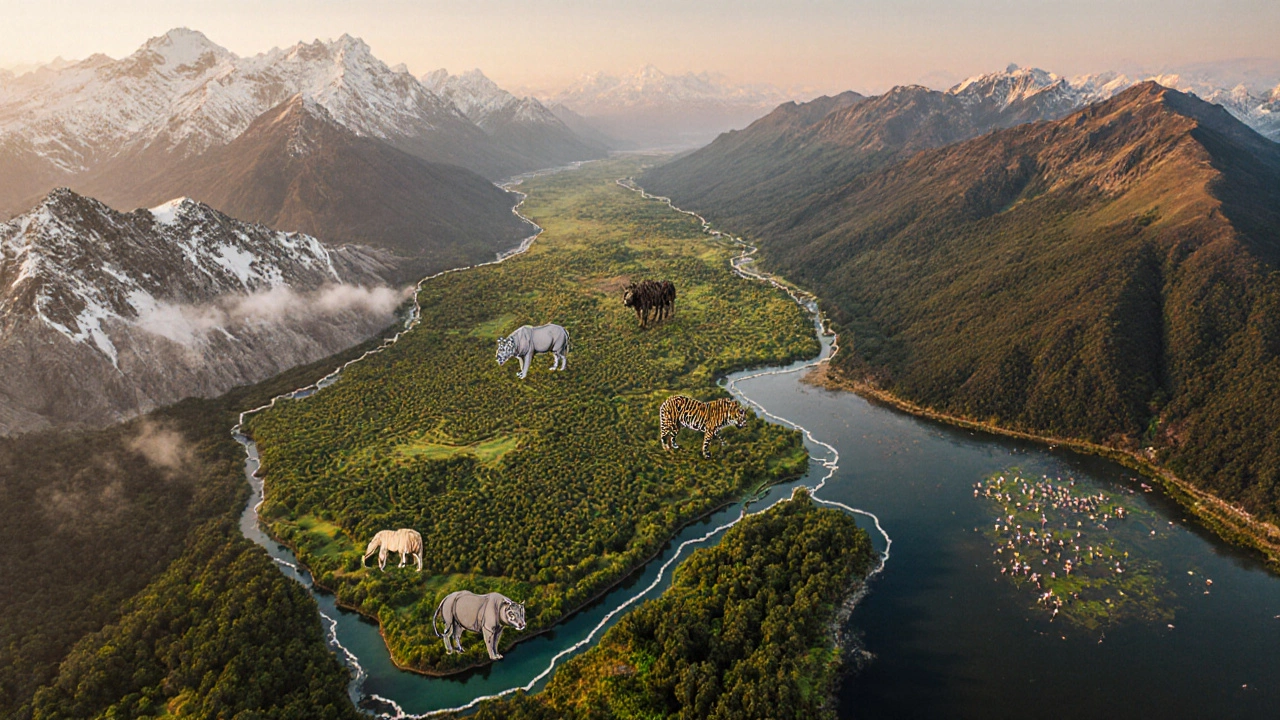SEARCH
Biodiversity Hotspots in India – Discover the Country’s Living Treasures
When you hear biodiversity hotspots in India, areas that host a disproportionate number of the world’s plant and animal species while facing intense pressure. Also called Indian biodiversity hotspots, they represent the most critical zones for conservation and scientific study. These zones often overlap with wildlife sanctuaries, dedicated reserves that protect key habitats and allow limited human activity and with broader protected areas, government‑declared zones such as national parks and biosphere reserves. Because they shelter a high share of endemic species, organisms that exist nowhere else on the planet, any loss here ripples through global biodiversity. In short, biodiversity hotspots in India demand focused protection, research, and community involvement.
Why These Areas Matter
The Western Ghats, Eastern Himalayas, Sundarbans, Indo‑Burma, and the unique grasslands of the Deccan all qualify as hotspots, each boasting distinct ecological traits. The Western Ghats, for instance, hold over 7,000 plant species, many of which are endemic, and provide fresh water to millions downstream. The Eastern Himalayas host rare mammals like the red panda and a plethora of orchid varieties. In the Sundarbans, mangrove forests act as natural buffers against cyclones while supporting the iconic Bengal tiger. Each hotspot encompasses a mix of forest types, altitude ranges, and climate zones, creating habitats that nurture specialized life forms. Conservation efforts require coordinated management across protected areas, community reserves, and wildlife sanctuaries, linking science with local livelihoods. Researchers often use these regions as living laboratories to study climate change impacts, species migration, and genetic diversity, illustrating how hotspots enable advances in ecology and medicine.
Beyond strict protection, eco‑tourism, responsible travel that supports conservation and benefits local communities has emerged as a practical tool to fund stewardship while raising awareness. Guided treks in the Western Ghats, bird‑watching tours in the Eastern Himalayas, and boat safaris in the Sundarbans bring visitors face‑to‑face with endangered flora and fauna, turning curiosity into advocacy. However, unchecked visitor numbers can strain fragile ecosystems, so sustainable carrying‑capacity limits are essential. Climate‑driven challenges—rising temperatures, altered rainfall patterns, and invasive species—add another layer of urgency. Governments, NGOs, and citizen scientists are now mapping biodiversity corridors to connect isolated sanctuaries, allowing wildlife to move safely across fragmented landscapes. This networked approach illustrates how protecting a hotspot is not just about fencing a single area but about weaving a resilient mosaic of habitats.
Below you’ll find a curated selection of articles that dive deeper into the science, policy, and travel experiences tied to India’s biodiversity hotspots. From budget guides for trekking these regions to insights on wildlife sanctuary management, the posts offer practical tips and fresh perspectives for anyone wanting to explore or protect these irreplaceable ecosystems.

The Seven Natural Heritage Sites in India: A Complete Guide
Discover all seven UNESCO natural heritage sites in India, their unique wildlife, locations, and how to visit responsibly.
Continue reading